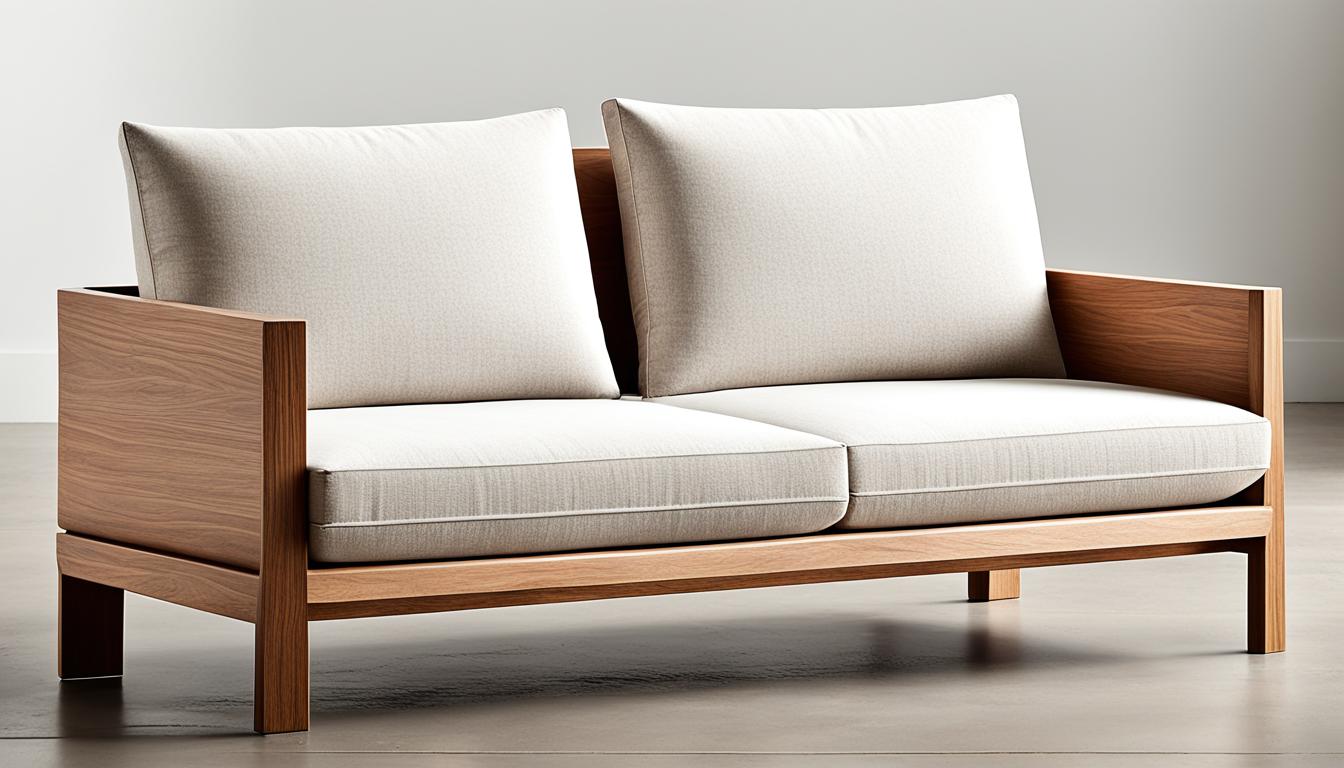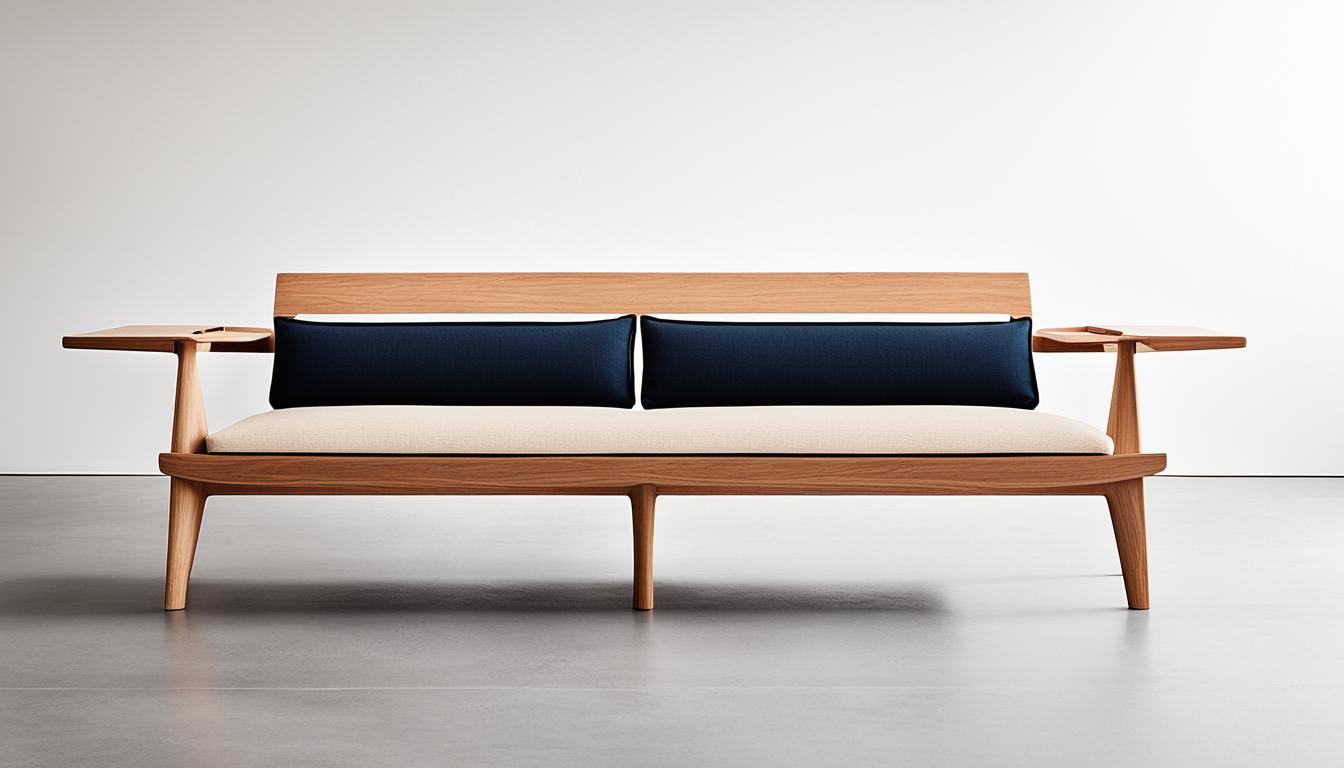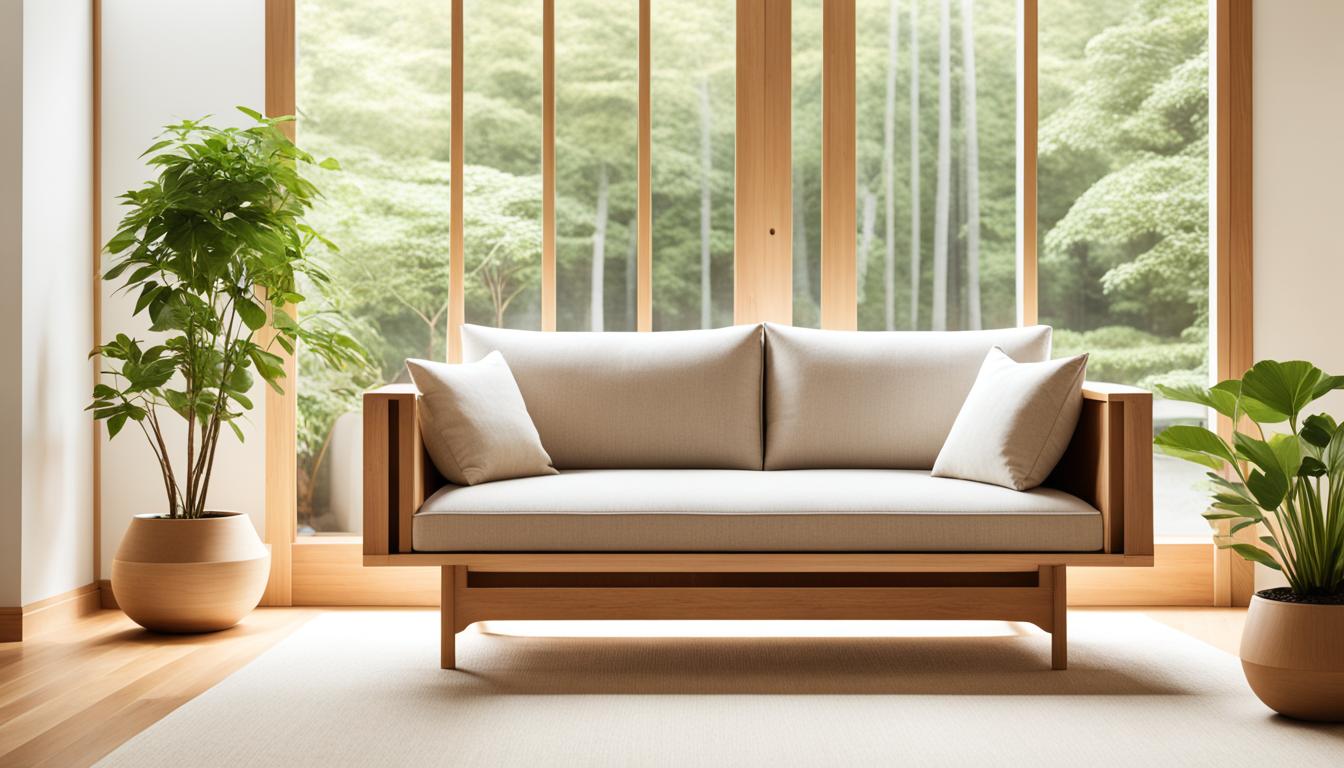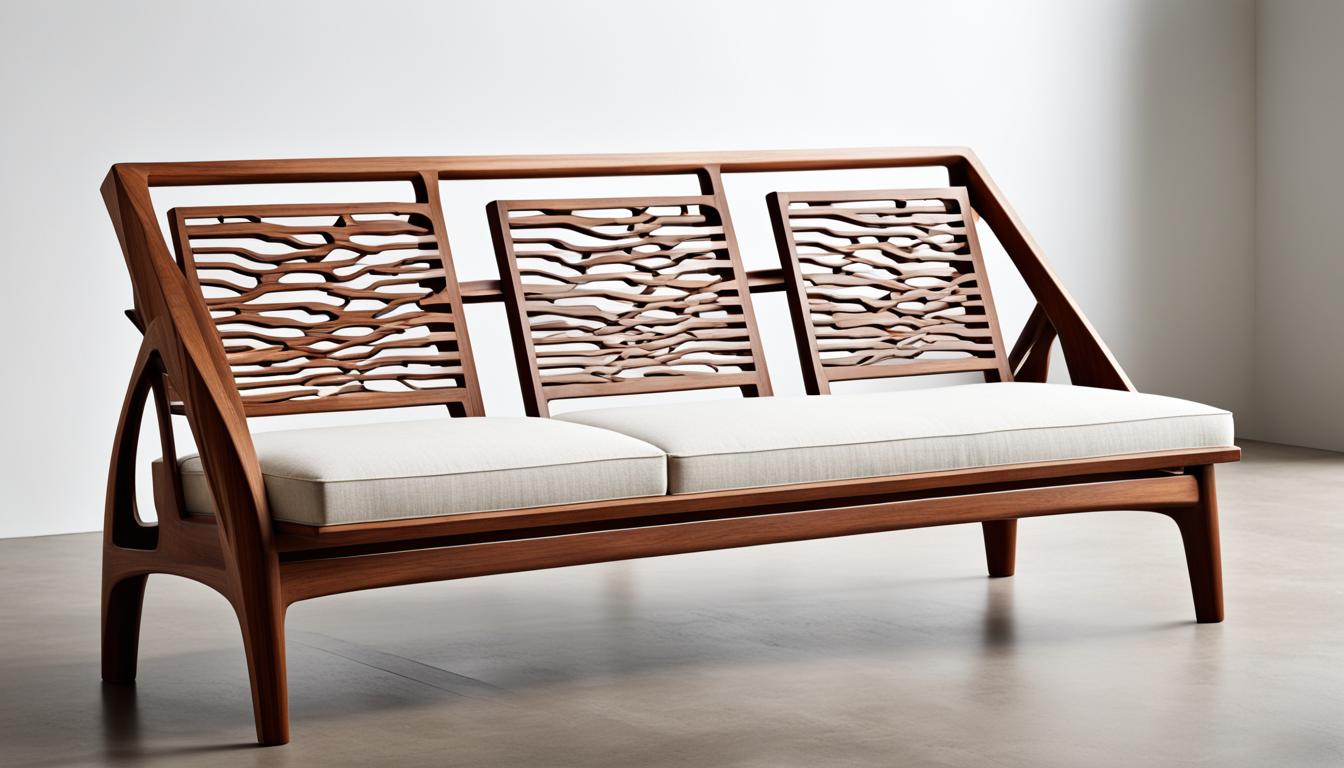🤍 Unmatched Quality, Authentic Craftsmanship
🤍 Unmatched Quality, Authentic Craftsmanship
🤍 Unmatched Quality, Authentic Craftsmanship
Welcome to our guide to Japanese joinery sofa ideas for your home! If you're looking to add a touch of elegance and craftsmanship to your living space, Japanese joinery sofas are the perfect choice.
These sofas showcase the beauty of Japanese woodworking techniques and offer a unique blend of functionality and artistry.
In this article, we will explore different Japanese joinery sofa designs, their construction methods, and how they can enhance the aesthetic appeal of your home.

Japanese joinery sofas are renowned for their minimalist designs, characterized by clean lines and simplicity.
They embody the concept of "less is more," creating a sense of calm and balance in your living space.
By embracing minimalism with Japanese joinery sofas, you can create a serene and clutter-free environment that promotes relaxation and mindfulness.
Japanese joinery sofas offer a minimalist approach to furniture design, making them the perfect addition to a minimalist interior design.
Their sleek and uncluttered aesthetic helps in creating a visually appealing space that exudes tranquility and sophistication.
Minimalist furniture is known for its functionality and versatility. It follows the principle of simplicity, focusing on essential elements and clean lines.
Japanese joinery sofas exemplify these characteristics, with their streamlined silhouettes and understated elegance.
Japanese woodworking techniques have been perfected over centuries, and they continue to inspire innovative furniture design today.
The art of joint complexity in furniture showcases the skill and craftsmanship of Japanese woodworkers, who create intricate joinery to ensure the durability and stability of their creations.
From traditional to modern designs, Japanese woodworking has evolved while maintaining its fundamental principles.
In this section, we will delve into the art of joint complexity and the evolution of Japanese woodworking.
The art of joint complexity in furniture is a testament to the meticulous craftsmanship of Japanese woodworkers.
By employing elaborate joinery techniques, they create furniture pieces that are not only visually stunning but also structurally superior.
These intricate joints not only enhance the strength and stability of the furniture but also add a touch of elegance and sophistication.
From intricate mortise and tenon joints to the elegant dovetail technique, Japanese woodworkers showcase their expertise and attention to detail in every joint.
These complex joinery methods require precision and skill to achieve seamless connections without the need for screws, nails, or adhesives.
The result is furniture that stands the test of time and becomes a testament to the enduring artistry of Japanese woodworking.
Whether it's a traditional sliding door, a coffee table with hidden compartments, or a modern piece with unique joinery, the art of joint complexity in furniture exemplifies the unmatched craftsmanship and ingenuity of Japanese woodworking.

The evolution of Japanese woodworking is a fascinating journey that encompasses centuries of tradition and innovation.
While the fundamental principles and techniques have remained consistent, Japanese woodworkers have adapted to the changing needs and styles of the times.
Historically, Japanese woodworking was rooted in the construction of traditional architecture, such as temples, shrines, and tea houses.
The emphasis was on precision, durability, and the use of natural materials.
As societal changes and advancements in technology took place, Japanese woodworkers began to explore new possibilities in furniture design.
Today, Japanese woodworking techniques are not limited to traditional designs but also find expression in contemporary furniture creations.
The integration of Japanese joinery techniques with modern materials and aesthetics has led to the development of innovative furniture designs that combine functionality with artistic expression.
The evolution of Japanese woodworking is a testament to the adaptability and creativity of Japanese craftsmen.
They have embraced modernity while upholding the timeless principles of traditional Japanese craftsmanship, resulting in furniture pieces that seamlessly bridge the gap between tradition and modernity.
Traditional Japanese furniture design encompasses the essence of harmony and balance.
It embraces Zen aesthetics, creating an environment of tranquility and peace.
One key element of traditional Japanese furniture design is the Japanese joinery sofa.
With its simple yet elegant design, it can serve as the focal point of a space that embraces the beauty and authenticity of traditional Japanese furniture.
Japanese joinery sofas, with their clean lines and minimalist appeal, blend seamlessly with the principles of Zen aesthetics.
These sofas not only provide comfortable seating but also exude a sense of calm and balance in your living space.
The attention to detail and craftsmanship in their construction showcase the meticulousness of traditional Japanese furniture design.
To harmonize your space with traditional Japanese furniture design, consider incorporating other elements, such as low wooden tables, floor cushions, or sliding doors.
Opt for natural materials like wood and bamboo, and choose earthy tones or neutral colors to create a serene atmosphere in your home.
By embracing traditional Japanese furniture design, you can transform your living space into a haven of tranquility and balance.
Discover the timeless beauty and elegance of Japanese joinery sofas and create a serene atmosphere that promotes a sense of harmony in your home.
Japanese joinery sofas are renowned for their exceptional craftsmanship and attention to detail.
They seamlessly merge the intricate joinery techniques with the simplicity of the design, resulting in elegant and timeless pieces of furniture.
Whether you prefer a classic, contemporary, or modern design, there is a Japanese joinery sofa that will suit your style and enhance the aesthetic appeal of your home.

When it comes to Japanese joinery sofa designs, each piece is meticulously crafted using traditional woodworking techniques that have been passed down through generations.
Expert artisans apply their knowledge and skill to create furniture that is not only visually stunning but also built to last.
The precise craftsmanship ensures the durability and strength of the sofa, making it a long-lasting investment for your home.
One of the distinguishing features of Japanese joinery sofas is their simplicity.
The clean lines and minimalistic design make these sofas versatile and easy to incorporate into any interior style.
Whether you prefer a sleek and modern look or a cozy and traditional ambiance, a Japanese joinery sofa can effortlessly blend in and enhance the overall aesthetic of your living space.
The elegance of Japanese joinery sofas lies in their ability to merge form and function seamlessly.
The focus on craftsmanship does not compromise comfort, as these sofas are designed with the utmost attention to ergonomics.
You can enjoy both the aesthetic appeal and the practicality of these sofas, creating a harmonious balance in your home.
Japanese joinery sofas come in various designs, each showcasing a unique blend of craftsmanship and simplicity.
From low-profile designs with clean, straight lines to more intricate styles with curved accents, there is a wide range of options to choose from.
This allows you to find a Japanese-style sofa that not only matches your personal taste but also becomes a statement piece in your living room.
| Design | Description |
|---|---|
| Classic | Timeless designs that evoke a sense of tradition and heritage. |
| Contemporary | Modern designs that incorporate sleek lines and minimalist aesthetics. |
| Modern | Innovative designs that push the boundaries of creativity while maintaining the essence of Japanese joinery. |
Whichever design you choose, a Japanese joinery sofa will undoubtedly add a touch of elegance and sophistication to your living space.
The seamless blend of craftsmanship and simplicity creates a focal point that draws attention and invites admiration.
Japanese joinery methods are renowned for their ingenuity and creativity, especially when it comes to sofa construction.
These methods go beyond the conventional and allow for innovative and unique designs that can elevate your home decor.
In this section, we will explore the versatility of joinery in sofa designs and the hands-on craftsmanship required to execute them.
When it comes to Japanese joinery, the possibilities are endless.
From mortise and tenon joints to dovetail joints, these unique techniques allow for intricate and precise connections that contribute to the overall strength and durability of the sofa.
The versatility of these joinery methods opens up a world of design possibilities, making it possible to create versatile sofa designs that can blend seamlessly with any interior style.
By incorporating different joinery techniques, such as hidden dovetail joints or mitered corners, designers can create visually stunning and structurally sound sofa designs.
These innovative joinery methods not only enhance the aesthetics of the piece but also ensure its longevity.
Executing joinery on sofas requires a high level of skill and craftsmanship.
Each joint is meticulously cut and fitted together, ensuring a seamless integration of the various components.
This hands-on approach to joinery creates a sense of authenticity and uniqueness in every piece of furniture.
The joinery execution process involves precise measurements, careful marking, and systematic assembly.
The craftsmen take pride in their work, and their attention to detail is evident in the final product.
From hand-cutting the joints to sanding and finishing the surfaces, every step of the joinery execution process contributes to the overall quality and beauty of the sofa.
Additionally, the use of traditional hand tools adds an extra layer of craftsmanship to the joinery process.
The artisans rely on their expertise and experience, using chisels, saws, and planes to shape and refine the joinery.
This hands-on approach ensures that each joint is executed with precision and care.
Artisan woodworking techniques have played a significant role in shaping the design of modern sofas.
By combining traditional Japanese woodworking techniques with contemporary aesthetics, designers have created a fusion of styles that blends the beauty of craftsmanship with the functionality of modern furniture.
The seamless integration of artisan woodworking styles with modern sofa design showcases the meticulous attention to detail and the mastery of woodworking techniques.
This fusion brings a unique charm and character to each piece, making it a focal point in any living space.
Japanese joinery sofas, influenced by artisan woodworking styles, exhibit intricate joinery details and elegant designs.
Each joint is carefully crafted to ensure a durable and stable construction, while the overall design remains visually stunning.

The image above demonstrates the fusion of artisan woodworking techniques with modern sofa design.
The craftsmanship and expertise displayed in the joinery create not only a functional piece of furniture but also a work of art.
By embracing artisan woodworking styles, modern Japanese joinery sofas bring a sense of tradition and heritage into contemporary interior design.
Japanese joinery techniques are not limited to traditional furniture.
They have found innovative applications in modern sofa design, pushing the boundaries of construction methods.
The incorporation of these unique joinery techniques adds a touch of creativity and sophistication to contemporary sofas, making them truly one-of-a-kind.
From hidden joinery that creates seamless designs to unconventional constructions that defy expectations, modern Japanese joinery sofas bring a fresh perspective to the world of furniture.
These innovative applications showcase how traditional craftsmanship can be merged with modern design sensibilities, resulting in sofas that are not only visually stunning but also structurally sound.
Japanese joinery sofas are not only visually stunning but also built to last.
The expert joinery craftsmanship ensures the durability and strength of the sofa construction, allowing it to withstand the test of time.
By combining meticulous attention to detail with unparalleled skill, Japanese craftsmen create sofas that are both robust and beautiful.
The juxtaposition of strength and beauty is artfully achieved through the precise joinery techniques employed in the construction process.
Each joint is carefully crafted to provide maximum stability and structural integrity, resulting in a sofa that can endure daily use without compromising its visual appeal.
One of the techniques used to ensure the longevity of Japanese joinery sofas is the incorporation of mortise and tenon joints.
These joints, known for their strength and reliability, create a solid connection between the different components of the sofa.
This ensures that the sofa remains sturdy and retains its original shape even after years of use.

In addition to their durable construction, Japanese joinery sofas are also admired for their aesthetics.
The meticulous craftsmanship brings out the natural beauty of the wood, showcasing its unique grain patterns and textures.
The clean lines and minimalist design of these sofas exude elegance and sophistication, making them the perfect centerpiece for any living space.
Now that you have read the above article, maybe you still have a couple of questions on this topic, so we will answer these questions below.
Japanese joinery sofas offer a unique blend of craftsmanship, elegance, and sustainability for your home decor.
They showcase the beauty of handcrafted woodwork and the precision of Japanese woodworking techniques, making them not only functional but also works of art that can transform your living space.
Unique Joinery methods such as mortise and tenon joints and dovetail joints bring creativity to sofa construction.
By exploring the versatility of joinery in sofa designs, you can discover innovative and unique ways to elevate your home decor and add a touch of Japanese craftsmanship to your space.
Artisan woodworking styles have had a significant influence on modern sofa design.
By blending traditional Japanese woodworking techniques with contemporary aesthetics, designers have created a fusion of styles that combines the beauty of craftsmanship with the functionality of modern sofas.
Mojo Boutique is your go-to destination for unique and creative sofa construction inspired by Japanese craftsmanship.
With their collection of modern Japanese sofa ideas, Mojo Boutique brings together the beauty of traditional craftsmanship with a contemporary design aesthetic.
We have explored the world of Japanese joinery sofas and discovered their unique blend of craftsmanship, elegance, and sustainability.
By choosing Japanese joinery sofas for your home decor, you are making a timeless choice that reflects your appreciation for traditional craftsmanship and your commitment to sustainable living.
These sofas are not only functional but also works of art that can transform your living space into a haven of beauty and authenticity.
Japanese joinery sofas offer a level of craftsmanship that is unparalleled, with each piece meticulously crafted to ensure durability and longevity.
The intricate joinery techniques used in their construction demonstrate the skill and precision of Japanese woodworking.
By investing in a Japanese joinery sofa, you are not only adding a stunning furniture piece to your home but also supporting the continuation of centuries-old woodworking traditions.
Furthermore, Japanese joinery sofas promote sustainability in home decor.
These sofas are built to last, reducing the need for frequent replacements and minimizing waste.
The use of natural, high-quality materials also contributes to their eco-friendliness.
By choosing Japanese joinery sofas, you are making a conscious choice to embrace sustainable living in your home.
Embrace the beauty and authenticity of Japanese joinery sofas and create a home environment that reflects your unique style and values.
With their timeless appeal and sustainable qualities, these sofas are not just furniture but a statement of appreciation for Japanese craftsmanship and a commitment to a greener future.


